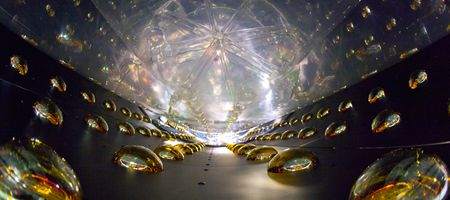Two new detectors in China have started recording the interaction of antineutrinos in an experiment that could help explain why matter predominates over antimatter in the universe.

“Right now there is not a good understanding of what causes the matter-antimatter imbalance in the universe,” says Karsten Heeger, a University of Wisconsin–Madison physics professor and one of the leading scientists in the experiment.
“We live in a world of matter and don’t know where all the antimatter went.”
Using antineutrinos as a probe, the Daya Bay experiment aims to explain the mystery by measuring with unprecedented precision a crucial type of transformation called neutrino mixing.
Neutrinos come in three types or ‘flavors’ — electron, muon, and tau — that can morph or oscillate from one form to another as they travel through space and matter. Two of the oscillations have been studied but one transformation of electron neutrinos – called θ13 or theta one-three – has not before been measured.
Because they are tiny and uncharged, neutrinos and antineutrinos can pass through something as large as the planet Earth with no interactions – a property that makes them pretty difficult to detect and study.
The large size and sensitivity of the detectors, along with the power of the reactors at Daya Bay, should give the best chan ce yetto collect enough antineutrinos to precisely measure the last unknown neutrino mixing angle.
“The results will be a major contribution to understanding the role of neutrinos in the evolution of basic kinds of matter in the earliest moments after the Big Bang, and why there is more matter than antimatter in the universe today,” says co-spokesperson Kam-Biu Luk of the US Department of Energy’s Lawrence Berkeley National Laboratory.
The massive antineutrino detectors are positioned underground and submerged in pools of ultrapure water to shield them from cosmic rays, natural sources of radiation, and other background signals.
When completed, the experiment will consist of eight 125-ton antineutrino detectors, two each in two experimental halls near the Daya Bay and Ling Ao nuclear power reactors and four in a far hall about two kilometers away.
“By having these different locations, we can see the neutrinos at different distances from the reactors and how they change as they travel through space,” says Heeger.
The next two detectors are now being assembled in the second experimental hall and are expected to come on line early this fall. The remaining four detectors will be completed next year.
China and the US lead the Daya Bay Reactor Neutrino Experiment, which also includes members from Russia, the Czech Republic, Hong Kong, and Taiwan.






